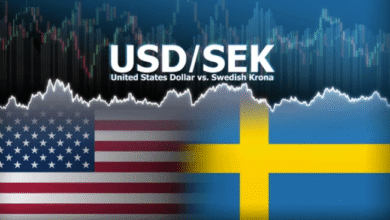U.S. economic outlook: Tariffs throw a spanner in the works
Tariffs likely will cause a modest stagflationary shock to the U.S. economy
- The import levies that President Trump announced on April 2 will cause the effective tariff rate to jump from about 2% last year to more than 20% this year, the highest rate in more than a century.
- If tariffs were to remain at their current levels, then our model simulation shows that inflation would shoot higher in the coming months, leading to a downturn in the U.S. economy.
- Assuming that tariffs rates remain at current levels strikes us as a bit extreme. The Trump administration very well could reduce tariffs, at least partially, if it is able to strike deals with other countries. But the 10% minimum tariff that the president has put into effect leads us to believe that a return to the 2.3% effective tariff rate of last year in not in the cards, at least not in the foreseeable future.
- We assume the effective tariff rate will recede to about 15% and remain there through the end of our forecast period in Q4-2026. This assumed 15% effective tariff rate strikes us as a reasonable balance between the current lofty level of levies and a return to pre-April 2 rates.
- We look for inflation to move higher in the coming months, eroding real income growth and causing growth in real consumer spending and overall real GDP growth to dip into negative territory beginning in Q3-2025.
- As growth weakens and the unemployment rate moves higher, we look for the FOMC to restart its easing cycle. Specifically, we forecast 125 bps of rate cuts between the June FOMC meeting and the end of 2025.
- We readily acknowledge that uncertainty around our economic outlook remains greater than normal. We expect the Fed to “look through” the price level increase caused by tariffs as long-term measures of inflation expectations remain anchored. However, if inflation were to show signs of becoming more entrenched, then the FOMC likely will not cut rates as much as we currently envision, if at all.
Tariffs likely will cause a modest stagflationary shock to the U.S. economy
The most notable economic development since we published our previous U.S. Economic Outlook a month ago was the extraordinary increase in tariff rates that President Trump announced on April 2. As we noted in a recent report, the majority of new levies fall into two buckets: (1) a 10% universal tariff that will apply to all U.S. imports that went into effect on April 5, and (2) baseline tariff rates that will be higher for nearly 60 countries with the application of “reciprocal” tariffs (11%-50%), effective April 9. Tariffs on foreign auto and auto parts imports (excluding those covered by the USMCA) also went into effect on April 3. The previously announced 25% tariffs on steel and aluminum remain in place. We estimate nearly 80% of all U.S. imports will be subject to tariffs based on the latest round of announcements, and the trade-weighted effective tariff rate in the United States will reach about 23% under these policies—a roughly tenfold increase from the 2.3% rate seen last year and the highest effective tariff rate in more than a century.






